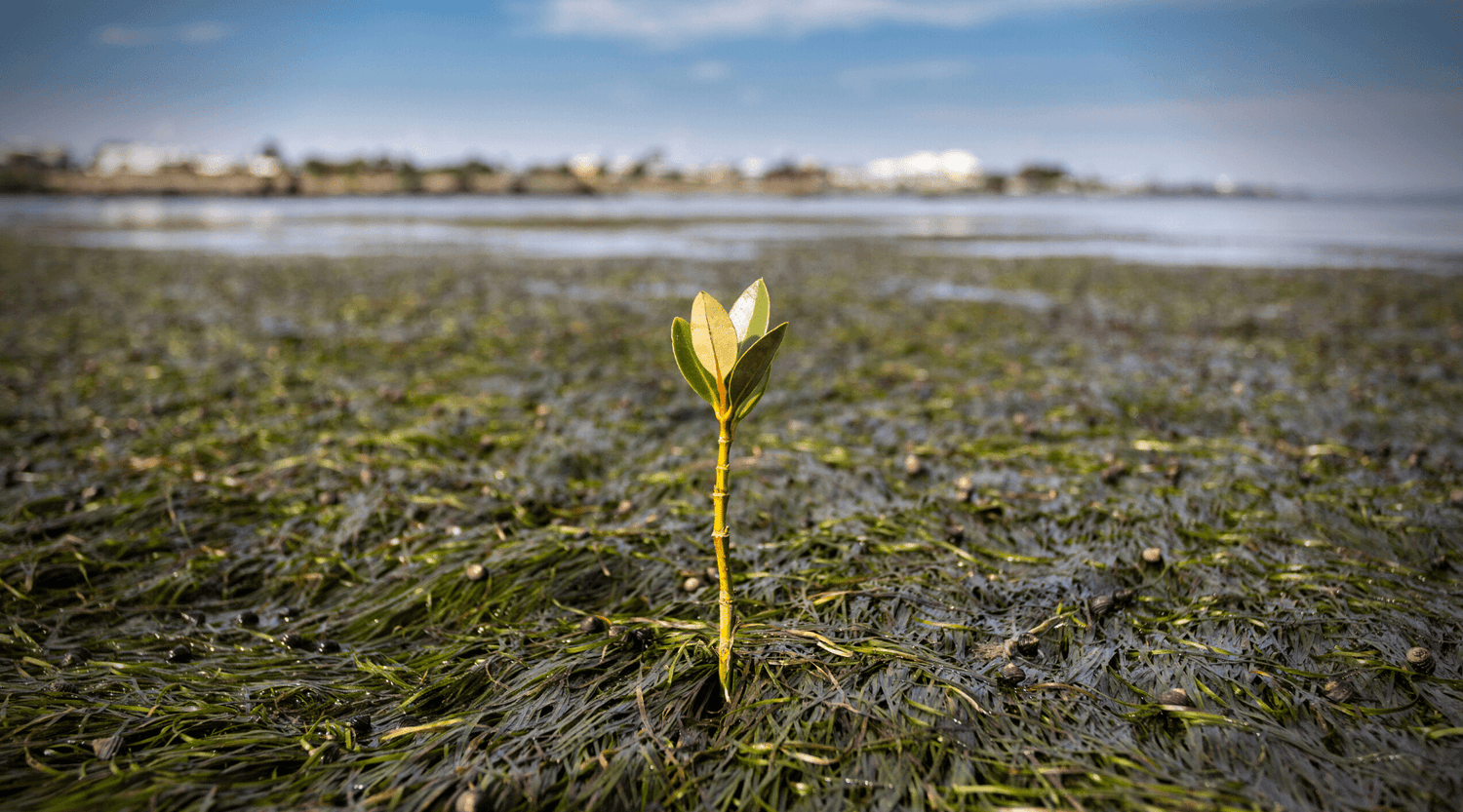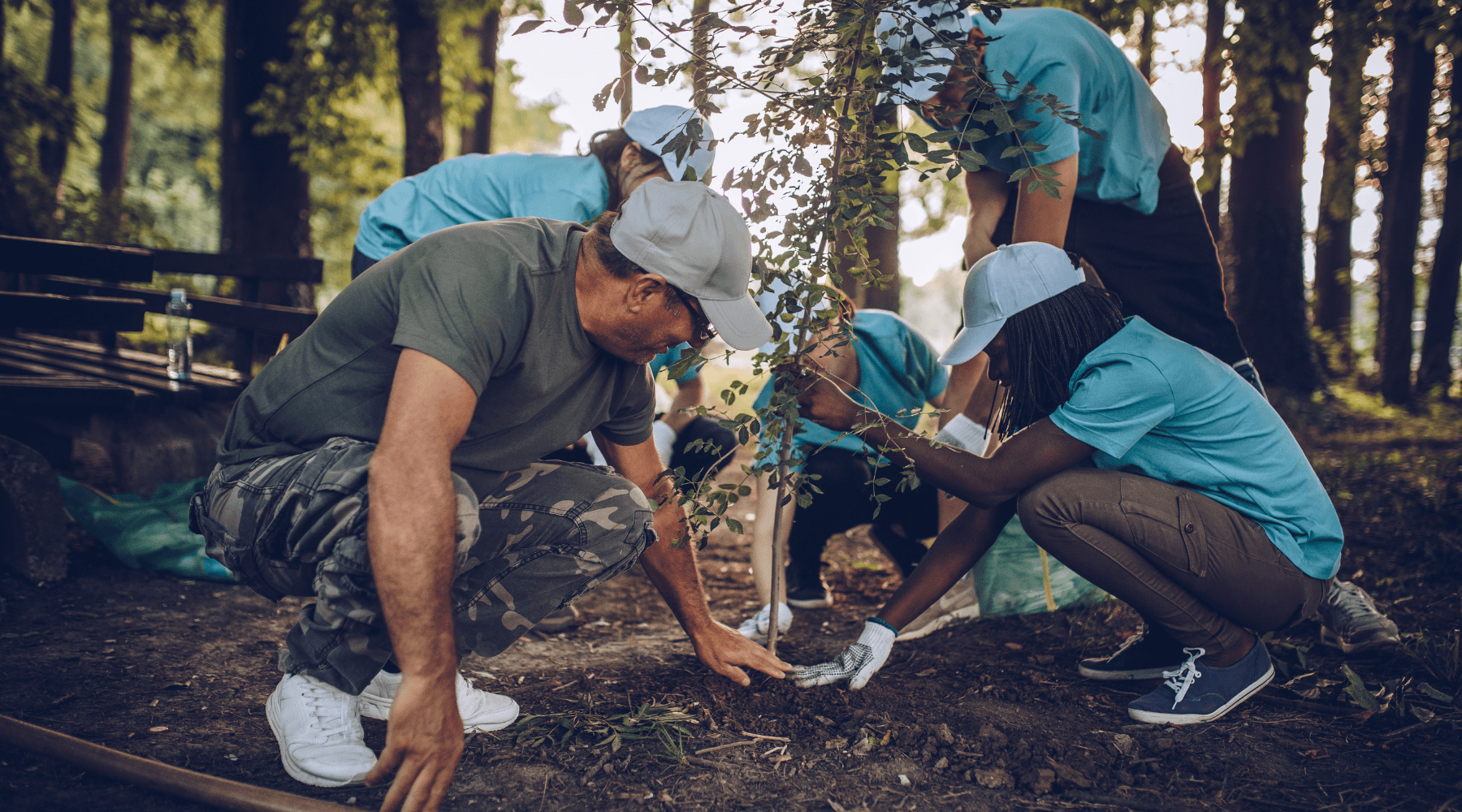Today's stories of ecosystem degradation and corporate excesses focus attention on the carbon dilemma. It's easy to despair about the prospect of even balancing our personal "carbon footprint." How do I begin? Are trees truly capable of absorbing greenhouse gasses, and if so, are all trees equal? How can I plant a tree that will grow and contribute the most?
What is carbon sequestration?
Carbon sequestration is a term that refers to the process of storing carbon. Carbon is a necessary component of all plant and animal life on Earth. While the total amount of carbon on the globe is constant, it readily moves and changes forms. The combustion of fossil fuels, which have for millennia stored vast amounts of carbon beneath the earth's surface, converts the carbon to carbon dioxide (CO2). CO2 absorbs and emits infrared radiation in the atmosphere, contributing to global warming.
CO2 levels are believed to be the highest in 20 million years, and scientists are developing methods for capturing and safely containing atmospheric carbon. One strategy, dubbed "terrestrial sequestration," entails the straightforward planting of trees. Carbon is absorbed by a tree during photosynthesis and stored in the wood for the duration of the tree's life. The huge trunk of an ancient oak or redwood tree contains several tons of carbon stored.
What types of trees should I plant?
Numerous studies have discovered various tree species that are particularly well-suited for carbon storage, and botanists are always experimenting with new hybrids. Surprisingly, we should avoid trees like willow, which retain relatively little carbon and produce higher levels of toxic volatile organic chemicals.
Consider the following while selecting trees to plant:
Numerous studies have discovered various tree species that are particularly well-suited for carbon storage, and botanists are always experimenting with new hybrids.
Consider the following while selecting trees to plant:
- Fast-growing trees accumulate the most carbon during their initial decades, which are frequently the most productive years of a tree's life.
- Carbon can be held in trees for generations without being released during decomposition.
- Photosynthesis is maximized when the leaves are large and the crowns are broad.
- Native species thrive in your soil and provide the ideal habitat for local wildlife.
- Low-maintenance, disease-resistant species will fare better without fertilizers and equipment that generate greenhouse gasses.
Consider the following species.
The "best trees" differ by region, so explore your neighborhood parks to determine which species are hardy in your temperate zone. Then take a look at these dependable and flexible superstar performers.
Yellow Poplar (or Tulip Tree) - ranked as the top carbon sink in one New York City study, works tirelessly in adverse conditions.
Silver Maple - According to the Center for Urban Forests, Silver Maple can sequester nearly 25,000 pounds of CO2 over a 55-year period.
Oak (White Oak, Willow Oak, Laurel Oak and Scarlet Oak) - Oak family has adapted to survive in a wide variety of temperatures and offers food and shelter for species.
Horse Chestnut - It thrives in urban areas; its domed top provides superb shade, which contributes to passive cooling.
Red Mulberry - It has the extra virtue of being a delectable seasonal fruit.
London Plane - It is an ideal choice for urban design since it is extremely tolerant of pollutants and root cramping, as well as being resistant to cold and disease.
American Sweetgum - It is a huge, long-lived tree with stunning fall colors. Consider American Linden instead in the north.
Dogwood - It has beautiful seasonal blossoms; this tree, along with others that are extremely thick, such as Black Walnut, can store more carbon in a smaller tree.
Blue Spruce - It is widely introduced as an ornamental, thrives in the majority of northern climates; Douglas Fir also flourishes in the Pacific Northwest.
Pines including White, Red, Ponderosa and Hispaniola - The most carbon-efficient conifers; determine which kind is best for your zone.
Where are the most trees required?
Cities and enclaves
Urban "heat islands" are created when enormous swaths of asphalt amplify and reflect sunlight, delivering CO2 directly into the atmosphere and generating "dead zones" below. A tree creates a shaded sanctuary, offers home for wildlife, and improves air quality. Adding street trees can actually help to cool the city during the summer through evaporative cooling.
Unambiguous cuts
While sustainable logging is important for human systems to function, large-scale clear cuts are an environmental disaster. The forest floor sequesters large amounts of carbon that have collected naturally over centuries. Soil disturbance and erosion induced by improper logging operations result in a massive release of carbon. Prompt replanting may be beneficial.
Tropics
Carbon offset research has demonstrated that a tropical area's prolonged growing season and fertile soil enable trees to quadruple their carbon storage capacity. Several of these forests have been damaged by industrial development and are in desperate need of restoration.
Your backyard or surrounding neighborhood
Create a grass-roots campaign by increasing public awareness of the critical need for carbon storage. Small local efforts have a beneficial ripple effect and, yes, actually reduce carbon emissions. You may help spread the news by enlisting the assistance of neighborhood children, coworkers, or acquaintances. They will leave with practical knowledge that they can pass on.
Several pieces of practical advice for planting:
Allow ample space.
Determine the size of your tree at maturity and prepare accordingly. Bear in mind that roots can extend beyond than branch span, and some can wreak havoc on sidewalks and even house foundations. Contact your local utility companies to determine the location of underground pipes and cables; otherwise, you may be held accountable for damages.
Enhance the benefits of energy.
Trees grown to the south, east, or west of a structure can actually help reduce summer air-conditioning energy demand. Evergreens planted along the north side provide a windbreak in the winter, reducing the need for heating fuel.
Reduce your reliance on fertilizers.
Numerous of the most effective carbon-offset trees thrive in poor soil. Commercial fertilizers applied straight to the planting hole might damage the roots and release harmful nitrous oxide, which may negate the tree's carbon benefits. Your own kitchen compost is the finest low-impact soil amendment.
When should I plant?
Transplant as early as possible in the spring, before leaf buds begin to emerge, especially if the tree is "bare root" (with no protective ball of soil). In temperate climes, plant metabolism slows to a near-halt throughout the winter, making the dormant tree less susceptible to transplant shock. Other seasons are OK for planting nursery trees with plastic or burlap-wrapped "root balls," although summer planting requires more intensive watering, reducing the overall short term environmental benefit.
Are you prepared to dig?
Make a circle approximately three times the diameter of the tree's root ball in your chosen location. Avoid digging too deeply: roots require oxygen from the air. Make your hole at least two inches deeper than your root ball in high-clay soil. Dig to the same depth as the root ball in sandy soil. Disentangle any compressed or "root-bound" tendrils gently. Before back-filling around the tree with compost or another amendment, mix it with part of the dirt from the hole. Gently water, preferably using a drip system or trickling hose, and allow the water to settle the soil rather than manually compacting it. Conserve water and soil nutrients by mulching with fallen leaves or grass clippings.
Take ownership of your tree.
Periodically check the soil to a depth of 2 inches: it should be moist but not waterlogged. The tree is susceptible during its first three seasons and may require irrigation if rainfall is less than one inch per week. Overwatering can cause the roots to "drown." Choose a place that is accessible without the use of gas (by foot, bicycle, or public transportation) and opt for hand equipment like a rake or hand saw over a leaf blower or chainsaw. Finally, consider what will happen to your tree after it dies. If possible, make good use of the wood. Carpentry's carbon storing capacity is infinite; burning wood for heating your home additionally minimizes reliance on fossil fuels.
Alternatives
Is there no space to plant?
Contribute to global forestry efforts. If you're looking to donate to a non-profit that works to plant trees in vital locations, the options can be overwhelming. Non Profit organizations that keep their overhead low, commit to tree maintenance, and involve local residents in the work and rewards of tree plantings are more likely to achieve long-term carbon storage.
TY Fine Furniture supports reforestation through a partnership with One Tree Planted. One Tree Planted is a non-profit organization dedicated to restoring forest regions that have been damaged by fire and diverse industries such as palm oil. They accept one-time donations as well as recurring donations. A tree can be planted for as little as $1.
With every ITEM sold, we automatically plant a tree using donations to One Tree Planted. Every time you checkout in our online store, you’ll see the tree added to your cart at no cost to you!
For those willing to go the extra mile, you can also make a direct donation and have your tree(s) planted (or one for each member of your family).



Leave a comment
This site is protected by hCaptcha and the hCaptcha Privacy Policy and Terms of Service apply.